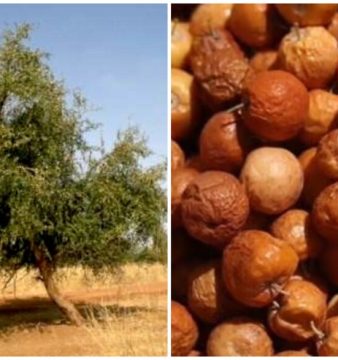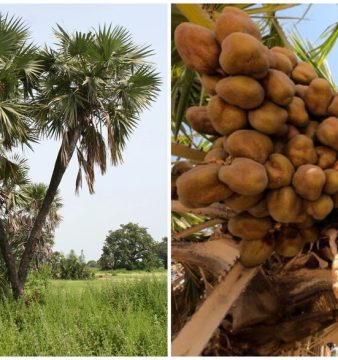Everything You Need to Know About Gongolez (Baobab)
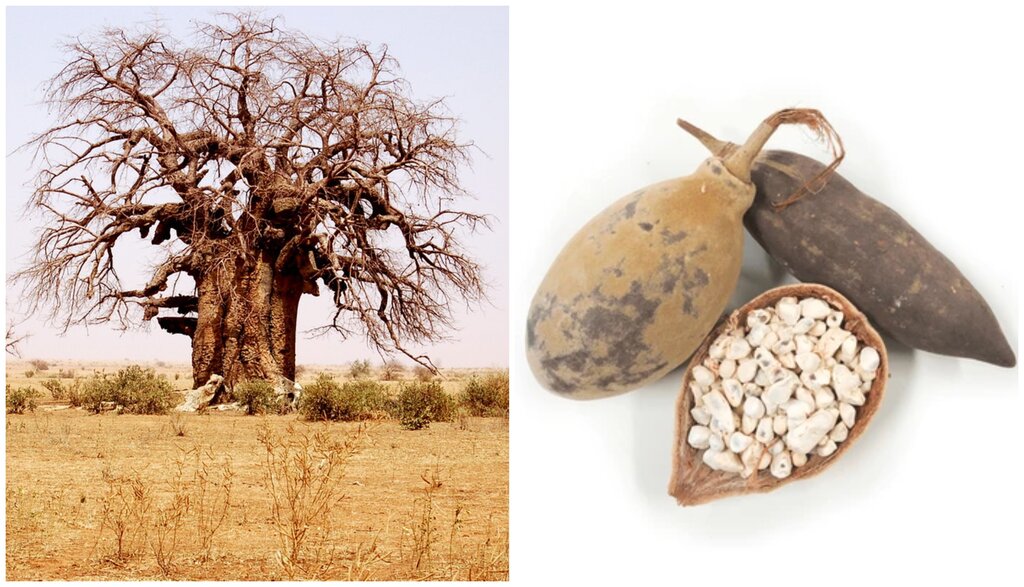
What is known as baobab in Africa and around the world is known as gongolez in Sudan – a favourite fruit. Baobab is a tree native to certain regions of Africa. This fruit grows on trees that can be over 1,000 years old. A slow-growing tree, baobab is an important resource with many purposes including food, shelter and even medicine.
The baobab tree
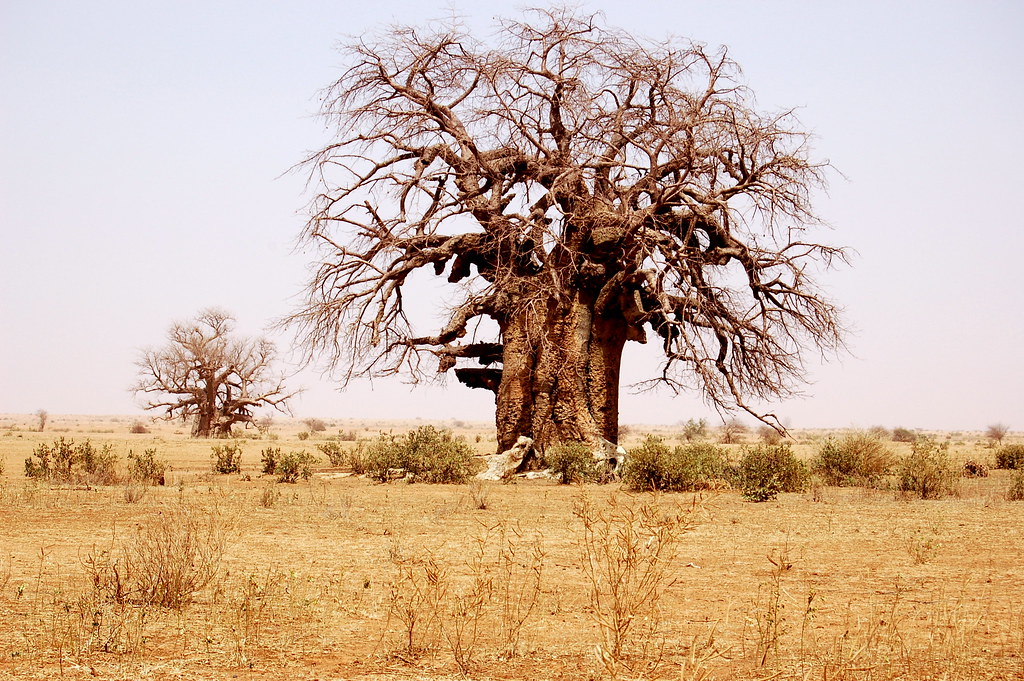
Also known by their scientific name Adansonia, baobab trees can grow up to 98 ft (30 m) tall and produce a large fruit that is commonly consumed. The generic name honours Michel Adanson, the French naturalist and explorer who described Adansonia digitata. The tree is also known as “the tree of life”, “upside down tree”, “monkey bread” and “cream of tartar fruit” in different parts of Africa.
The baobab tree grows in Sudan, South Sudan, Angola, Cape Verde, Zimbabwe, Madagascar, Kenya, Tanzania, Senegal and other African countries. Although it grows across Africa, a genomic and ecological analysis has suggested that the genus is Madagascan in origin. The trees have also been introduced to other regions such as Asia, in countries such as Yemen and Oman, and Australia.
According to Wikipedia, young baobab trees usually have slender, tapering trunks, often with a swollen base. Mature trees have massive trunks that are bottle-shaped or cylindrical and tapered from bottom to top. The trunk is made of fibrous wood arranged in concentric rings, although rings are not always formed annually and so cannot be used to determine the age of individual trees. Tree diameter fluctuates with rainfall so it is thought that water may be stored in the trunk. Baobab trees have two types of shoot – long, green vegetative ones, and stout, woody reproductive ones. Branches can be massive and spread out horizontally from the trunk or are ascending.
The baobab fruit
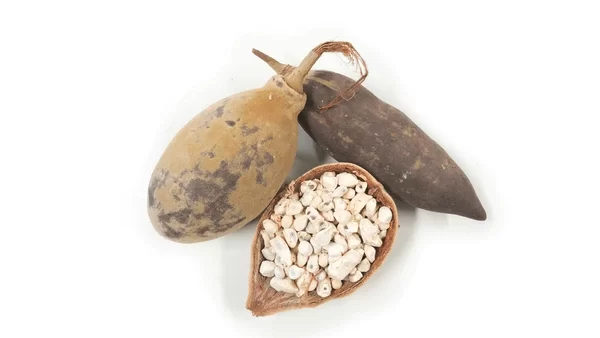
The baobab fruit grows to about one foot in length with a woody exterior. Inside is the pulp, which is white, large, oval to round, dry and chalk-like with a tangy, sweet and citrus-like taste and hold black kidney-shaped seeds. When ripened, the woody exterior becomes brittle, and the pulpy interior becomes chalky-like.
It’s healthy
According to Healthline, baobab fruit is considered to be a super fruit rich with vitamins and minerals. It helps reduce inflammation and balance blood sugar levels. However, because of certain anti-nutrients, you should keep a moderate intake of this fruit.
The pulp is high in vitamin C, antioxidants and several key minerals like potassium, magnesium, iron and zinc. The leaves are rich in calcium and high-quality proteins that can be easily digested. The seeds and kernel of the plant are loaded with fiber, fat and micronutrients like thiamine, calcium and iron. Powdered baobab contains many important nutrients but is especially high in vitamin C, vitamin B6, niacin, iron and potassium.
In addition, according to Healthline, some research has found that baobab may help with weight loss. It can help curb cravings and promote feelings of fullness, helping you eat less and lose weight.
Baobab is a good source of fiber, and can promote digestive health. Powdered versions can contain up to 18% of the daily recommended value in just one tablespoon (10 grams).
Baobab in Sudan
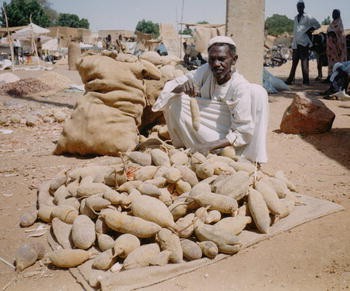
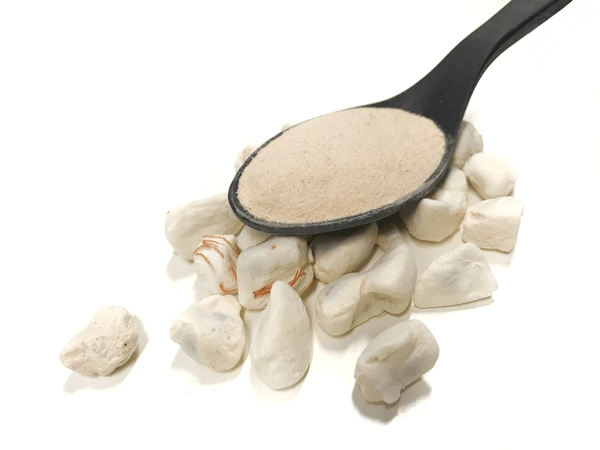
In Sudan, gongolez is consumed in many forms. The pulp is eaten fresh as is – sucked on until the seed appears. The pulp is also turned into powder, which is later used to make refreshing gongolez juice. In recent years, companies such as Elnasr have begun to produce instant baobab drink, which 100% natural baobab powder used to make drinks. The powder is also commonly consumed with sugar, red chili powder and other ingredients usually sold on street vendors around schools and universities for the most popular clients: school children and university students. Most recently, gongolez ice cream has been made available, in addition to gongolez darduma/dardooma, which is gongolez popsicles. In addition, in recent years, companies have begun to make gongolez sweetmeat.



